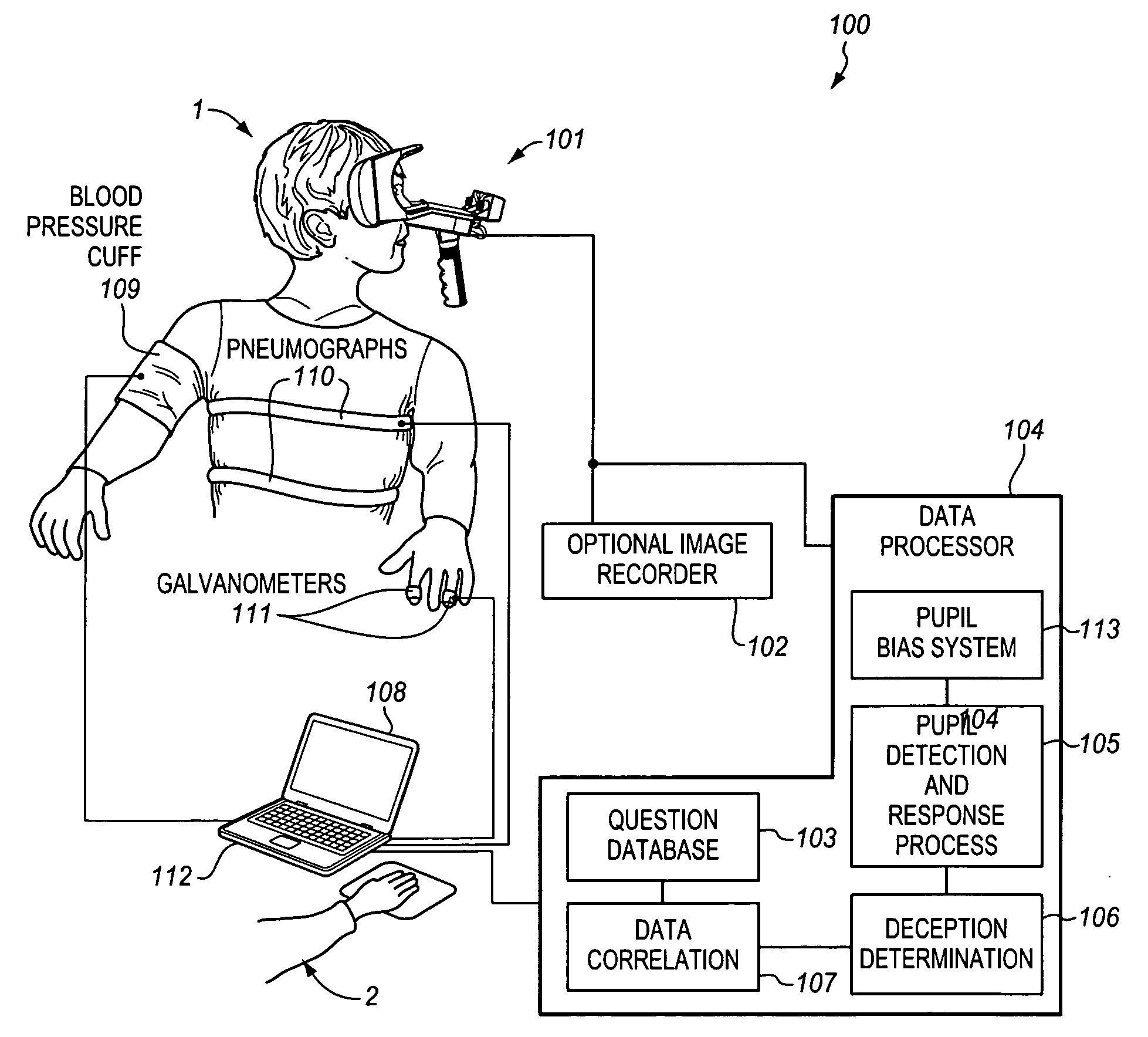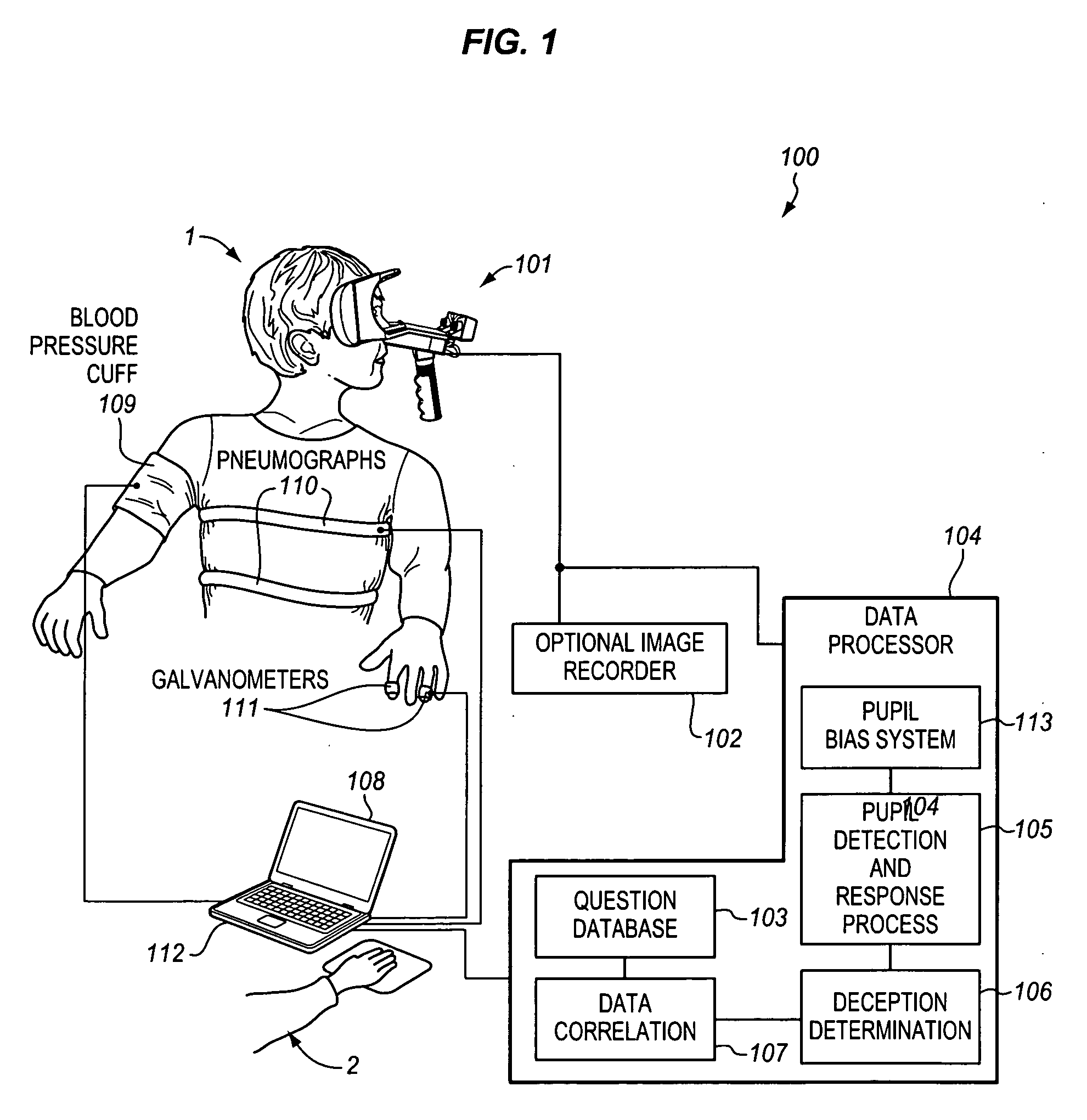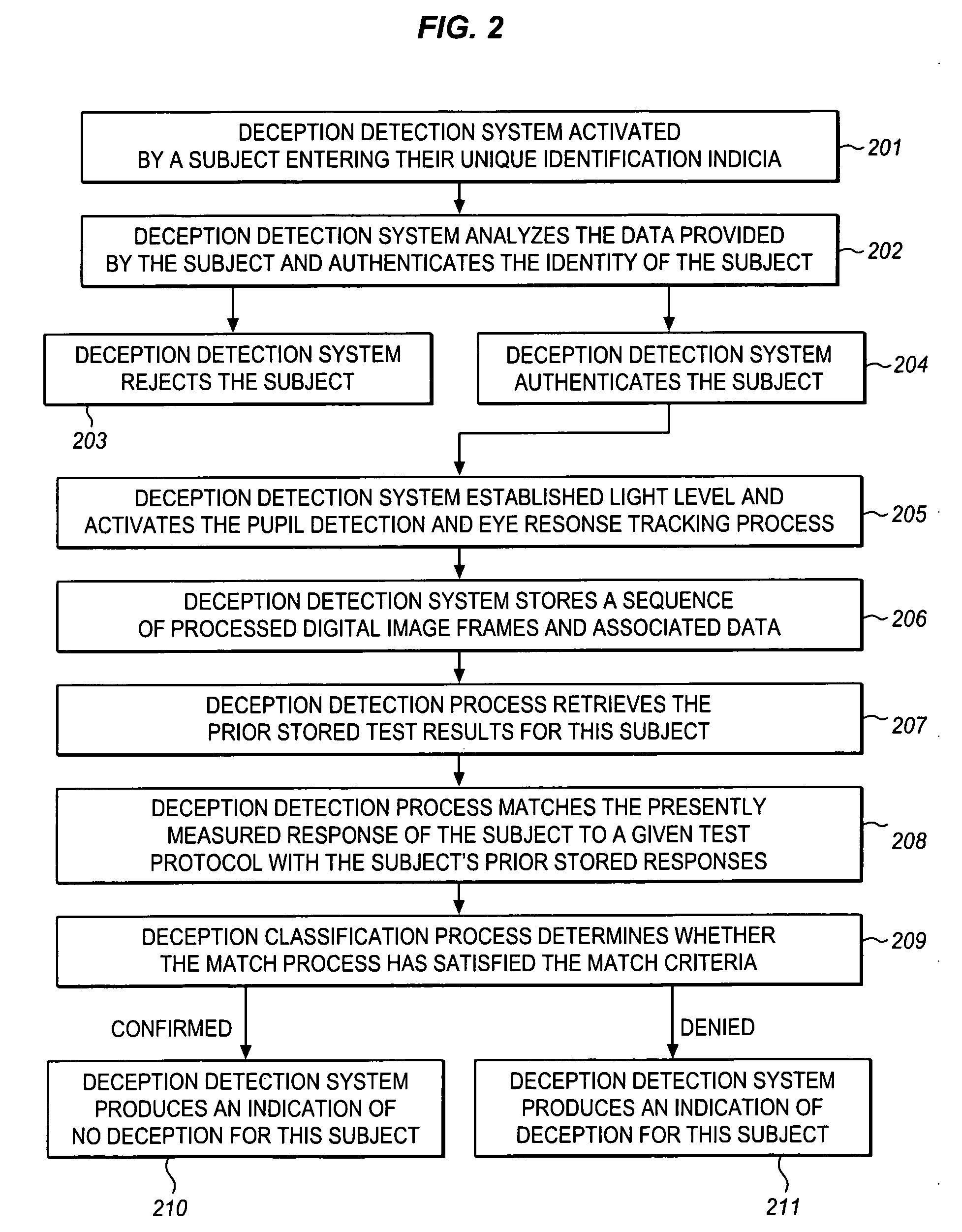System for analyzing eye responses to accurately detect deception
a technology of eye responses and analyzing systems, applied in the field of eye responses analysis to accurately detect deception, to achieve the effect of accurately measuring the subject, preventing its dilation, and restricting the pupil
- Summary
- Abstract
- Description
- Claims
- Application Information
AI Technical Summary
Benefits of technology
Problems solved by technology
Method used
Image
Examples
Embodiment Construction
[0019]It is a problem to accurately determine whether a subject is providing deceptive answers to questions posed by an interviewer (also termed “examiner” herein). One commonly used instrument to assist in making this determination is a polygraph, which is basically a combination of medical devices that are used to monitor physiological changes occurring in the subject's body. As a subject is questioned about a certain event or incident, the examiner monitors the change in the subject's heart rate, blood pressure, respiratory rate and electro-dermal activity (sweatiness in the fingers) compared to the subject's normal levels. Fluctuations in these various monitored physiological characteristics may indicate that person is being deceptive, but the exam results must be interpreted by the examiner, which is a potential source of error. Additionally, the polygraph machine measures various physiological changes, including in blood pressure and heart rate, to determine when the subject i...
PUM
 Login to View More
Login to View More Abstract
Description
Claims
Application Information
 Login to View More
Login to View More - Generate Ideas
- Intellectual Property
- Life Sciences
- Materials
- Tech Scout
- Unparalleled Data Quality
- Higher Quality Content
- 60% Fewer Hallucinations
Browse by: Latest US Patents, China's latest patents, Technical Efficacy Thesaurus, Application Domain, Technology Topic, Popular Technical Reports.
© 2025 PatSnap. All rights reserved.Legal|Privacy policy|Modern Slavery Act Transparency Statement|Sitemap|About US| Contact US: help@patsnap.com



